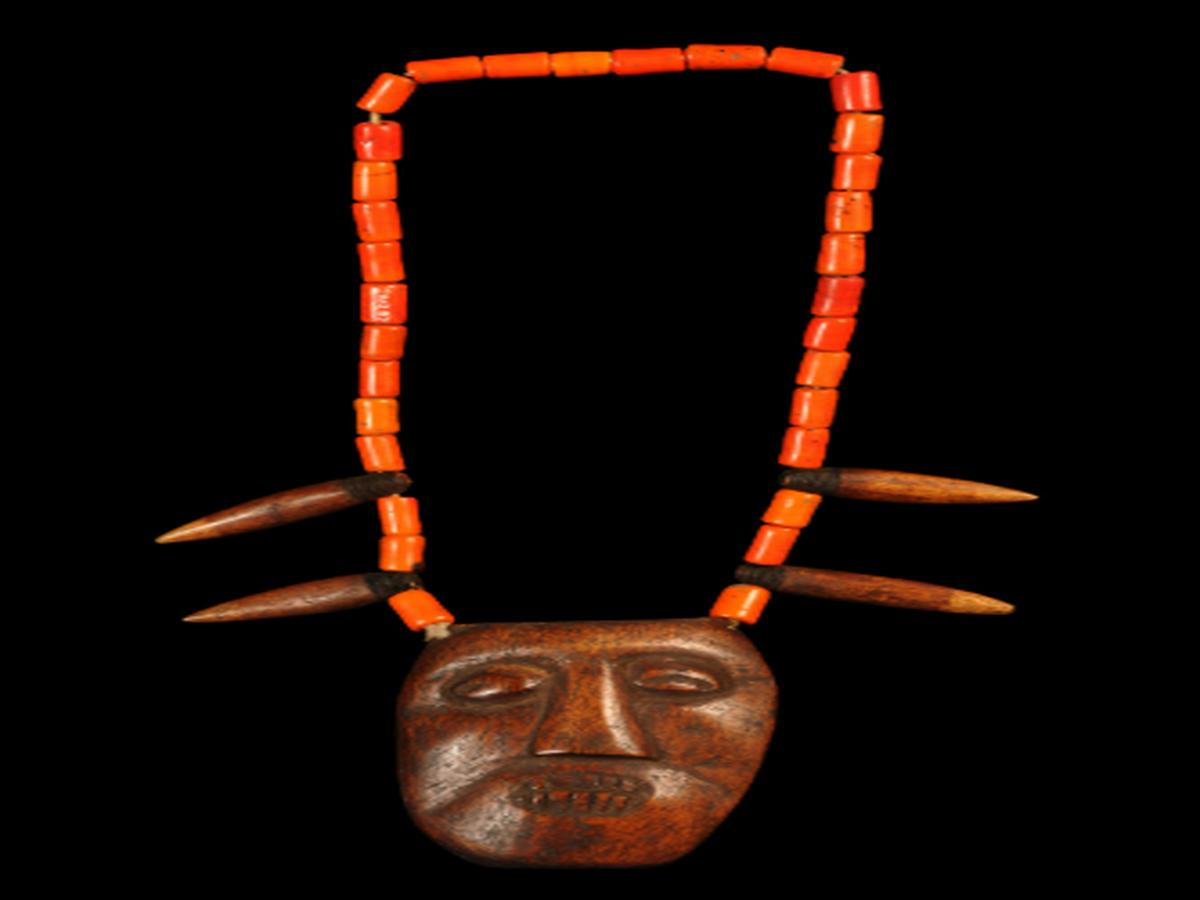State
Tribe Name
Art Type
short description
The Konyak Naga tribe usually occupies the Mon district of Nagaland. The ornament Monyu Thün is an age-old ornamented necklace. The Konyaks have a glorious history that highlights their reputation as fierce warriors, famous for headhunting, which defined their material culture, ornamentation, and even everyday belonging. The term is composite and refers to two obvious components: a beaded neck chain attached to a hand-carved wooden pendant fashioned out of a single piece of wood. Many tribal beadworks string together cylindrical beads onto a cotton thread.
Thumbnail

Filter Postion
Left
Filter Background
Off
Theme
Filter Header Image

content
Image

description
The Konyak Naga tribe usually occupies the Mon district of Nagaland. The ornament Monyu Thün is an age-old ornamented necklace. The Konyaks have a glorious history that highlights their reputation as fierce warriors, famous for headhunting, which defined their material culture, ornamentation, and even everyday belonging. The term is composite and refers to two obvious components: a beaded neck chain attached to a hand-carved wooden pendant fashioned out of a single piece of wood. Many tribal beadworks string together cylindrical beads onto a cotton thread.
From the beading chain, four wooden "teeth" hang near the pendant, each wrapped with black cotton thread at its lower end. These teeth add symbolic meaning to the ornament as a possible representation of hunted trophies or the souls of the dead. The wooden pendant itself, carved like a human head, is an obvious main element of the necklace, while its open mouth displays visible teeth. The pendant attached to the chain by the upper edges gives a balanced and dramatic look. Such a pendant must refer to the tribe's historical headhunting practices, serving as a testimony of courage and a protective talisman. In modern times, such artifacts like the Monyu Thün are preserved widely in ethnographic museums and tribal collections as material testimonies to Konyak artistry and belief systems. They also serve as reminders of a culturally wealthy past, which continuously shapes tribal identity today.
From the beading chain, four wooden "teeth" hang near the pendant, each wrapped with black cotton thread at its lower end. These teeth add symbolic meaning to the ornament as a possible representation of hunted trophies or the souls of the dead. The wooden pendant itself, carved like a human head, is an obvious main element of the necklace, while its open mouth displays visible teeth. The pendant attached to the chain by the upper edges gives a balanced and dramatic look. Such a pendant must refer to the tribe's historical headhunting practices, serving as a testimony of courage and a protective talisman. In modern times, such artifacts like the Monyu Thün are preserved widely in ethnographic museums and tribal collections as material testimonies to Konyak artistry and belief systems. They also serve as reminders of a culturally wealthy past, which continuously shapes tribal identity today.
Image Mode
landscape
promoted
On
Verified
Off
